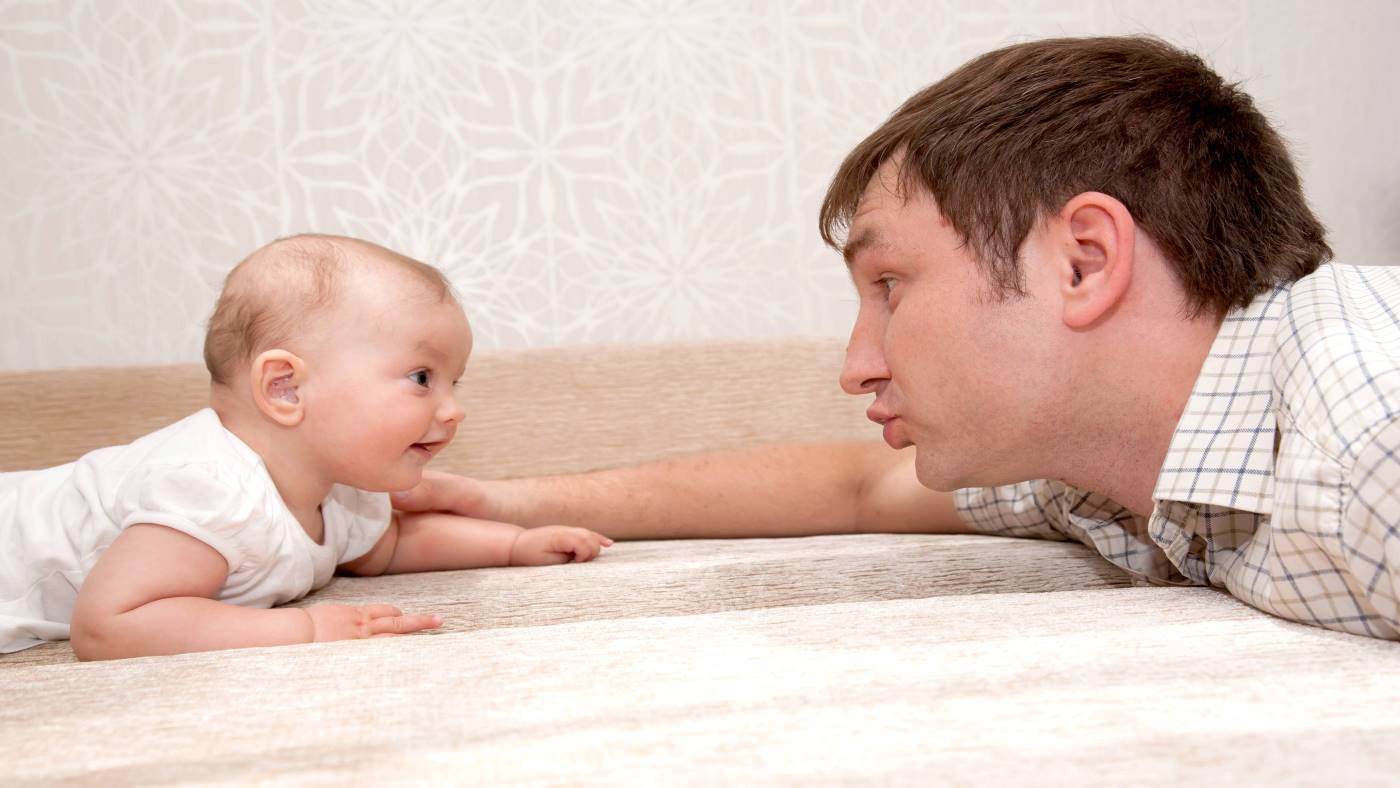Recognising patterns of speech, expressions and gestures

Your baby will now be starting to direct the sounds that they can make, perhaps towards you or other people, or sometimes at toys during play. They have been interested in watching and interacting with you since they were born and might have responded with movements or smiles when you spoke to them. Now, or soon, your baby will be starting to make more deliberate sounds with their tongue, mouth and lips, and looking towards people or objects when they do this.
Starting a conversation
Your baby has noticed you make eye contact with them as you direct your language towards them and they're beginning to copy this. You might even see your baby start to use some symbolic gestures, like smacking their lips when they are hungry. This is a sign of their understanding that they can communicate in ways other than crying.[1]
Mimicking patterns of speech and gestures
Alongside this is your baby's growing understanding of how speech is used to communicate. You might see them taking turns when making sounds directed at you as they are starting to recognise patterns and ‘rules’ of conversation and speech.[2] As your baby begins to understand social interaction, they will copy these patterns in interactions with you – they may not only mimic turn-taking and intonation, but facial expressions and gestures that are familiar to them as well.[3]
Does your baby smile back at you?
This is also when your baby's social and emotional development and language skills link. When you smile at them, they might smile back, and when you respond to their smiles and laughter, they might show excitement. These interactions demonstrate an emotional bond between you that is a step towards building empathy and concern.[4]
They might wait for you to join in the chat
Following this, your baby will make more distinct sounds when moving their lips and mouth. They may pause for responses from familiar adults and others when they cry or babble, as if waiting for people to take their turn in the interaction. They might use more facial expressions and sounds when interacting with others, and you may notice that they match the tone or pitch of their vocalisations to the person who is speaking with them.[3]
References:
[1] John Santrock (2010). Child Development: An Introduction. 13th ed. London: McGraw-Hill Humanities/Social Sciences/Languages. 263-264.
[2] Canadian Language and Literacy Research Network. (2009). Handbook of Language and Literacy Development: A Roadmap from 0 to 60 months. Available: http://theroadmap.ualberta.ca/speech_languages/taxonomies.
[3] Gotzke, C. & Sample Gosse, H. (2007). Parent/Caregiver Narrative: Interacting 4 - 6 Months. In L.M. Phillips (Ed.), Handbook of language and literacy development: A Roadmap from 0 - 60 Months. [online], pp. 1 - 8. London, ON: Canadian Language and Literacy Research Network. Available at: Handbook of language and literacy development
[4] Jelen, M. & Smith, V. (2008). Parent/Caregiver Narrative: Social and Emotional Development 4 – 6 Months. In L.M. Phillips (Ed.), Handbook of language and literacy development: A Roadmap from 0 - 60 Months. [online], pp. 1 - 9. London, ON: Canadian Language and Literacy Research Network. Available at: Handbook of language and literacy development